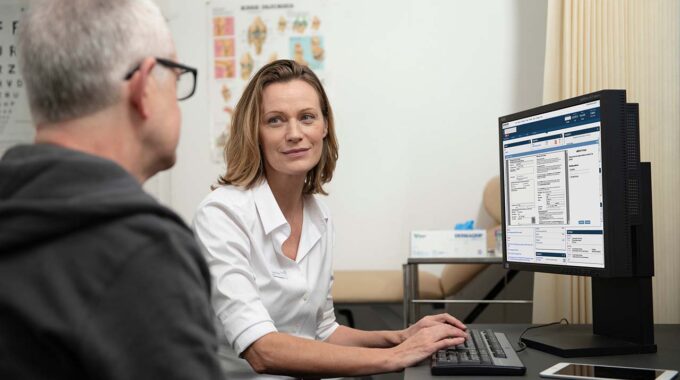Northampton General Hospital NHS Trust (NGH) has signed a ten-year contract with Nervecentre to implement…
Jim Trueman, Business Development Manager “Using mobile technology to improve clinical handover”
Jim Trueman, Business Development Director at Nervecentre Software has been researching the challenges of handover in hospitals. Here is his overview on how the use of mobile technology can reduce many of the problems associated with handover.
Handover is widely perceived as a critical safety issue in many hospitals and regarded as a time when errors are most likely to occur. The Royal College of Physicians has stated that failure in handover is ‘one of the most perilous procedures in medicine’ and a ‘major preventable cause of patient harm’, citing poor communication and systemic error as contributory factors. The implications are significant; delays in care, incorrect diagnoses and treatment and widespread inefficiencies can all have a detrimental effect on the patient experience.
While Healthcare systems globally are focused on the improvement of Clinical Handover, the challenge is becoming increasingly complex:
- Clinician time is becoming more pressured: Increasing demands on healthcare systems increases time pressures on individual clinicians- prioritising between direct patient care and clinical handover meetings becomes harder
- The frequency of handover is increasing, and becoming more complex as the hospital environment develops, including:
- Shorter shifts for doctors
- Greater crossover of responsibility and the use of multi-disciplinary teams
- Out-of-hours doctors who have no day to day contact with the patients in their care
The competing patient safety pressures of spending more time on direct patient care for an increasing number of patients; and spending longer periods sharing more complex information at increasingly frequent handovers is unsustainable with traditional methods and tools.
At its heart, clinical handover is a communications issue requiring continuity of information shared across the multi-disciplinary team throughout the day. Mobility enables collection and sharing of handover data at the bed-side in real-time; mobile communication tools understand which clinicians are currently responsible for the care of each patient and provide appropriate messaging, alerting and escalation of urgent patient issues; electronic records ensure continuity of information throughout the patient journey through the hospital.





This Post Has 0 Comments